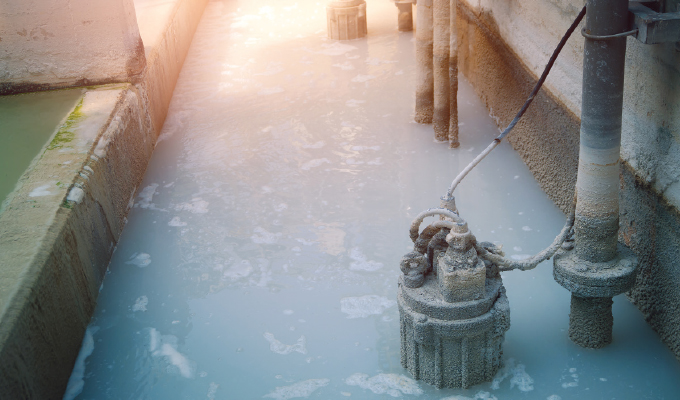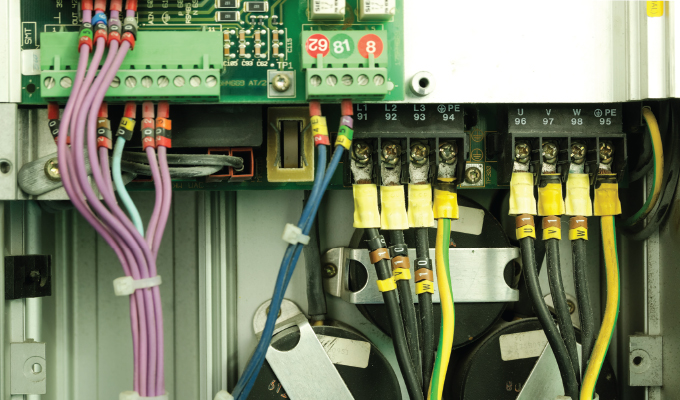By SWPA Executive Director Adam Stolberg and Chris Caldwell, Pete Duty & Associates
Whether operators are seeking firmer control of their pumping speeds or greater energy efficiency, variable frequency drives have proven their worth in numerous applications. But what are their benefits for submersible wastewater pumping applications specifically? And how can pump operators ensure that their submersibles and drives work together to maximize their mutual advantages? To answer those questions, SWPA Executive Director Adam Stolberg and SWPA member Chris Caldwell of Pete Duty & Associates engaged in a lively discussion—the first part of which follows.
How would you best describe the benefits of combining submersible pumps with variable speed drives (VFDs)?
The two primary benefits are the possibility of reducing energy cost, and the ability to control the output of the pump to help with process control. Energy savings can be achieved when the pumping system has a relatively low percentage of static head in the total head. For systems where most of the head is dynamic, meaning friction loss, slowing the pump down with a VFD will drop the power required to pump the water significantly, resulting in lower operating costs. These benefits are lost in systems where there is a high percentage of static head in the total head. Generally, systems where the static head represents 50 percent or less of the total head are good candidates for energy savings using VFDs. There are exceptions, but this is a good rule of thumb.
In terms of benefits for process control using a VFD, this allows the operator to match the output of the pumps to the process requirement. This is especially useful for pumps in a treatment plant such as headworks or RAS pumps where the pump output can be tuned to exactly the flow that the process needs. For lift station pumps, the process benefits of reducing the speed are less clear, but the primary benefit would be managing pumping from a wet well that is too small for the demand. This often happens when an existing wet well is retrofitted with larger pumps due to an increase in flow to the station. In this instance, the VFD can help manage the range of flows to the station, and reduce the on-off cycling of the pumps.
What are some of the key considerations to matching a submersible pump with a VFD?
When matching submersible pumps to VFDs, the primary considerations are the suitability of the motor to operate on a VFD, the selection of the pump for the particular duty point, and electrical current output capability of the VFD.
Not all motors are suitable for operation on VFDs. Suitable motors should meet the requirements of the NEMA MG1 standard, section 31. This section defines, among other things, the ability of the motor’s insulation system to withstand the short duration high voltage spikes that a VFD sends to the motor during operation. Motors that are not designed to run on VFDs may suffer premature insulation failure if operated on a VFD.

How does pump selection and/or the application affect the user’s options?
The pump selection and duty point have an impact on the suitability of a VFD for a particular application. Pumping systems where the static head exceeds 50 percent of the total head are not usually good applications for VFD pumping systems. Regardless of the percentage of static head, pumps to be operated on VFDs should be selected so that the full speed operating point is near the best efficiency point on the curve, and preferably to the right of BEP. Pump selections where the operating point is toward the left side of the pump curve are not VFD suitable because you would have little useable turn down range before the pump is at or near shutoff head (zero flow).
When selecting a VFD to operate a particular motor, emphasis should be placed on the electrical current required by the motor compared to the current output capability of the VFD, as opposed to simply looking at horsepower ratings. While the motor horsepower compared to the VFD rated horsepower can be used as a guideline, the current demand compared to the current output of the drive should be the governing factor. Select a VFD with a current output capability approximately 10 percent higher than the motor’s current demand. In hot climates or higher elevations, you may want to increase this safety margin further; the VFD manufacturer can give you advice on the safety margin required.
FOR MORE INFORMATION
The mission of the Submersible Wastewater Pump Association (SWPA) is to enhance the global wastewater environment by informing, educating, and providing leadership in the design, procurement, and operation of submersible wastewater pumping systems. For more information, visit www.swpa.org.
MODERN PUMPING TODAY, March 2020
Did you enjoy this article?
Subscribe to the FREE Digital Edition of Modern Pumping Today Magazine!



